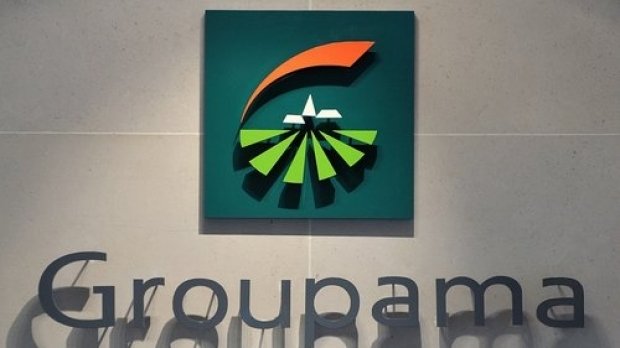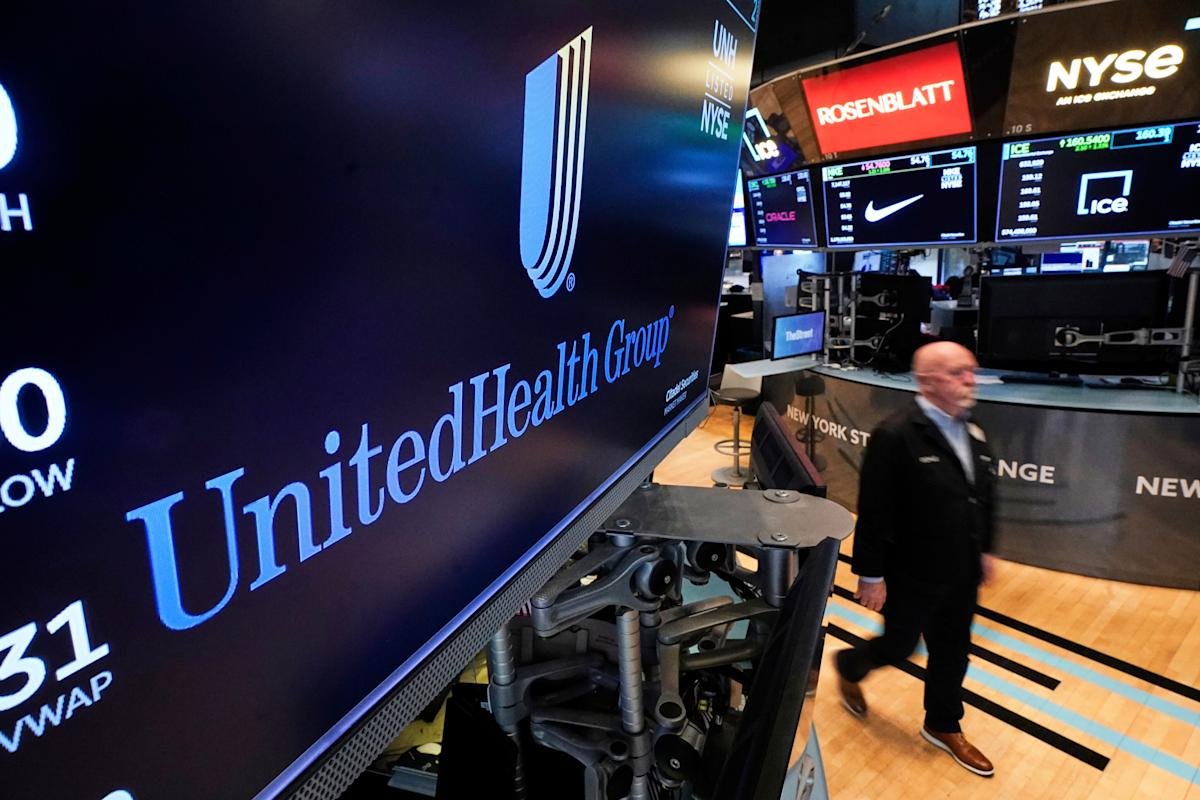Tips & Advices
Cautious travellers and active tourists drive rise in Romania’s travel insurance market

Travelers in Romania are becoming increasingly cautious when it comes to planning their holidays, according to data from insurance market leader Groupama, which has recorded a significant increase in the number of insured individuals over the past four years, reaching 1.1 million in 2025.
Groupama’s data analysis shows a preference for vacations in European destinations, lasting between 8 and 15 days. At the same time, around 35% of individual policies and 32% of family policies are dedicated to short trips, indicating that city breaks remain popular.
Over 90% of family policies and more than 70% of individual policies are purchased for leisure holidays.
In terms of traveler profiles, two major categories stand out: active young people up to 40 years old and cautious families, aged between 41 and 60 years old.
The first category prefers individual trips, lasting at least 8 days, and often chooses complex insurance packages that cover a wide range of risks such as flight delays or lost luggage, trip interruption or extension, or even trip cancellation (STORNO). They also tend to engage in sports with medium to high risk during their vacation, as reflected by the large number of additional insurances for winter or summer sports purchased according to the season.
On the other hand, people aged 41 to 60 generally travel with other family members and prefer extended insurance coverage for air travel or roadside assistance, with travel by personal car remaining one of the preferred options for family vacations.
The ranking of the most purchased extra coverage categories highlights travelers’ main concerns:
- Additional insurance for air travel – one of the most frequently used, due to travelers’ uncertainties about flights (cancellations or delays, lost luggage).
- STORNO additional insurance – reimburses the value of the travel package if the trip can no longer take place due to unforeseen reasons.
- Additional insurance for winter/summer sports – reflects a growing interest in engaging in sports activities while traveling.
According to Groupama data, approximately 60% of claims were related to medical expenses incurred during travel, ranging from common warm-season illnesses (such as gastroenteritis, insect bites, ear infections) to surgical interventions and medical repatriations during the cold season, generally caused by winter sports accidents. Claims paid for additional coverage included canceled or delayed flights, unexpected events during car travel, and unavoidable vacation cancellations.
Clients who purchase a Groupama travel insurance policy have free access to the ÎntreabăMedic service – a remote medical support platform that allows each client to receive free advice from a licensed real doctor through micro-consultations conducted via communication channels such as WhatsApp, Facebook Messenger, Telegram, or SMS. The client can use this service at any time to receive treatment recommendations or to confirm whether a medical appointment or intervention at a healthcare facility is necessary.
Tips & Advices
Health insurance companies have a problem — people are using their plans more

When medical insurance provider Centene (CNC) opened its books to investors on Friday, the company reported a surprising loss and an uptick in usage.
The latter is a broader problem for the industry.
In the second quarter, Centene reported an adjusted loss of $79 million and a “health benefits ratio” of 93%. Its benefits ratio, or the amount of its revenue derived from premiums that it pays out for medical care, jumped from 87.6% in the same quarter last year.
Moves in that figure can have outsized effects on health insurers’ financial performance.
“Because of the narrow margins of our health plan business, relatively small changes in our HBR can create significant changes in our financial results,” Centene wrote in its Q2 earnings report.
And the problem is not isolated to Centene.
Elevance Health (ELV), which offers plans including Blue Cross and Blue Shield, reported a similar jump in its “benefit expense ratio” to 88.9% in the second quarter, up from 86.3% in the same quarter last year.
Both Centene and Elevance attributed the jump especially to their government-subsidized offerings under the Medicaid and Medicare programs.
Molina Healthcare (MOH), which reported Q2 earnings earlier this month, reported a similar outlook, attributing its lowered earnings guidance to the same trend facing other medical insurers.
“The short-term earnings pressure we are experiencing results from what we believe to be a temporary dislocation between premium rates and medical cost trend which has recently accelerated,” Molina CEO Joseph Zubretsky said in a statement.
Elevance stock dropped by roughly 12% after its report earlier this month, while Molina stock dropped by roughly 8%. Both stocks have remained depressed since.
Health Care (XLV) is the worst-performing sector in the S&P 500 this year.
Centene stock dropped by roughly 15% in premarket trading after its earnings release before recovering to a positive gain of roughly 6% by the closing bell on Friday.
The buoy was led by CEO Sarah London’s announcement that Centene was reinstating earnings guidance after pulling this forecast earlier in the month. The company also reported revenue of $48.7 billion, which topped estimates for $44.2 billion, and said it expects to be able to raise the payments it gets from states for Medicaid plans, which would improve its margins.
The premium-to-cost ratio will be closely watched at UnitedHealth Group (UNH), which refers to this measure as its “medical care ratio” (MCR) and is slated to release Q2 earnings next week.
Tips & Advices
Travel Insurance Market Size Future Scope, Demands

The Travel Insurance Market is estimated to reach approximately USD 19.3 billion in 2024 and is projected to grow to around USD 42.6 billion by 2033, expanding at a compound annual growth rate (CAGR) of about 9.3% from 2025 to 2033.
Travel Insurance Market Overview
The Travel Insurance Market is experiencing robust growth driven by the rising volume of domestic and international travel, increasing awareness of travel-related risks, and the growing need for financial protection against unforeseen events. Travel insurance offers coverage for trip cancellations, medical emergencies, lost baggage, and other disruptions, making it an essential component of travel planning. The digital transformation of insurance services, with the rise of online platforms and mobile apps, has made policy purchasing and claims processing more convenient. Additionally, the growing popularity of adventure tourism and business travel has further expanded the demand for customized coverage options. Regulatory mandates in some regions and partnerships between travel agencies and insurers are also contributing to market expansion. North America and Europe lead the market, while Asia-Pacific is witnessing the fastest growth due to rising middle-class incomes and tourism.
Request a sample copy of this report at: https://www.omrglobal.com/request-sample/travel-insurance-market
Advantages of requesting a Sample Copy of the Report:
1) To understand how our report can bring a difference to your business strategy
2) To understand the analysis and growth rate in your region
3) Graphical introduction of global as well as the regional analysis
4) Know the top key players in the market with their revenue analysis
5) SWOT analysis, PEST analysis, and Porter’s five force analysis
The report further explores the key business players along with their in-depth profiling
Allianz Travel Insurance, Travel Guard by AIG, Travelex Insurance Services, Seven Corners, Berkshire Hathaway Travel Protection, World Nomads, IMG (International Medical Group), Generali Global Assistance, Travel Insured International, and Nationwide.
Travel Insurance Market Segments:
By Coverage Type:
• Trip Cancellation/Interruption
• Medical Coverage
• Baggage Loss and Delay
• Emergency Evacuation
• Accidental Death & Dismemberment
By Policy Type:
• Single Trip Insurance
• Annual Multi-Trip Insurance
By Traveler Type:
• Leisure Travelers
• Business Travelers
• Students
• Senior Citizens
By Distribution Channel:
• Direct Sales (Online & Offline)
• Travel Agencies
• Banks & Financial Institutions
• Insurance Brokers
Report Drivers & Trends Analysis:
The report also discusses the factors driving and restraining market growth, as well as their specific impact on demand over the forecast period. Also highlighted in this report are growth factors, developments, trends, challenges, limitations, and growth opportunities. This section highlights emerging Travel Insurance Market trends and changing dynamics. Furthermore, the study provides a forward-looking perspective on various factors that are expected to boost the market’s overall growth.
Competitive Landscape Analysis:
In any market research analysis, the main field is competition. This section of the report provides a competitive scenario and portfolio of the Travel Insurance Market’s key players. Major and emerging market players are closely examined in terms of market share, gross margin, product portfolio, production, revenue, sales growth, and other significant factors. Furthermore, this information will assist players in studying critical strategies employed by market leaders in order to plan counterstrategies to gain a competitive advantage in the market.
Regional Outlook:
The following section of the report offers valuable insights into different regions and the key players operating within each of them. To assess the growth of a specific region or country, economic, social, environmental, technological, and political factors have been carefully considered. The section also provides readers with revenue and sales data for each region and country, gathered through comprehensive research. This information is intended to assist readers in determining the potential value of an investment in a particular region.
» North America (U.S., Canada, Mexico)
» Europe (Germany, U.K., France, Italy, Russia, Spain, Rest of Europe)
» Asia-Pacific (China, India, Japan, Singapore, Australia, New Zealand, Rest of APAC)
» South America (Brazil, Argentina, Rest of SA)
» Middle East & Africa (Turkey, Saudi Arabia, Iran, UAE, Africa, Rest of MEA)
If you have any special requirements, Request customization: https://www.omrglobal.com/report-customization/travel-insurance-market
Key Benefits for Stakeholders:
⏩ The study represents a quantitative analysis of the present Travel Insurance Market trends, estimations, and dynamics of the market size from 2025 to 2032 to determine the most promising opportunities.
⏩ Porter’s five forces study emphasizes the importance of buyers and suppliers in assisting stakeholders to make profitable business decisions and expand their supplier-buyer network.
⏩ In-depth analysis, as well as the market size and segmentation, help you identify current Travel Insurance Market opportunities.
⏩ The largest countries in each region are mapped according to their revenue contribution to the market.
⏩ The Travel Insurance Market research report gives a thorough analysis of the current status of the Travel Insurance Market’s major players.
Key questions answered in the report:
➧ What will the market development pace of the Travel Insurance Market?
➧ What are the key factors driving the Travel Insurance Market?
➧ Who are the key manufacturers in the market space?
➧ What are the market openings, market hazards,s and market outline of the Travel Insurance Market?
➧ What are the sales, revenue, and price analysis of the top manufacturers of the Travel Insurance Market?
➧ Who are the distributors, traders, and dealers of Travel Insurance Market?
➧ What are the market opportunities and threats faced by the vendors in the Travel Insurance Market?
➧ What are deals, income, and value examination by types and utilizations of the Travel Insurance Market?
➧ What are deals, income, and value examination by areas of enterprises in the Travel Insurance Market?
Purchase Now Up to 25% Discount on This Premium Report: https://www.omrglobal.com/buy-now/travel-insurance-market?license_type=quick-scope-report
Reasons To Buy The Travel Insurance Market Report:
➼ In-depth analysis of the market on the global and regional levels.
➼ Major changes in market dynamics and competitive landscape.
➼ Segmentation on the basis of type, application, geography, and others.
➼ Historical and future market research in terms of size, share growth, volume, and sales.
➼ Major changes and assessment in market dynamics and developments.
➼ Emerging key segments and regions
➼ Key business strategies by major market players and their key methods
Contact Us:
Mr. Anurag Tiwari
Email: anurag@omrglobal.com
Contact no: +91 780-304-0404
Website: www.omrglobal.com
Follow Us: LinkedIn | Twitter
About Orion Market Research
Orion Market Research (OMR) is a market research and consulting company known for its crisp and concise reports. The company is equipped with an experienced team of analysts and consultants. OMR offers quality syndicated research reports, customized research reports, consulting and other research-based services. The company also offers Digital Marketing services through its subsidiary OMR Digital and Software development and Consulting Services through another subsidiary Encanto Technologies.
This release was published on openPR.
Tips & Advices
Pet and travel insurance complaints rise amid regulatory scrutiny

The number of complaints about pet and livestock insurance referred to the Financial Ombudsman Service (FOS) increased by more than a quarter over the past year, making it the fastest growing source of complaints in UK general insurance (UKGI) – according to exclusive analysis by market intelligence firm Insurance DataLab.
FOS data for the first quarter of 2025 showed that almost 600 complaints were made about pet related policies between January and March this year, up 26% from the same period in 2024, when fewer than 475 cases were recorded.
This means that pet and livestock insurance is now the fourth most complained about business line in UKGI, with complaints having grown by more than 146% over the last five years.
Another concerning development for the pet insurance market is that more than 52% of complaints were upheld in favour of the customer over the first three months of 2025. This is around 19 percentage points higher compared to the same quarter in 2024 and represents the highest upheld rate of any UKGI business line.
These data points suggest a broader issue beyond isolated service failings in the pet insurance arena – the findings hint at potential weaknesses in product design, policy wordings and claims processes across this marketplace.
“Pet insurance might still be a relatively niche product in terms of volume, but the direction of travel here is significant,” explained Insurance DataLab co-founder Dan King.
“It’s not just that complaints are rising – it’s that a growing number are being upheld. That should prompt some serious reflection from insurers about whether these products are delivering fair value and good customer outcomes.”
Insurance DataLab’s analysis found that while claims related complaints remain the most common issue – accounting for more than 70% of complaints made to the FOS for this line of business – pet insurance is seeing a widening range of concerns.
Indeed, complaints about sales and advice rose by 73% year-on-year and now account for nearly a fifth of all pet cover cases, up from just 14% in Q1 2024.
“This is not just about how claims are handled – it’s also about how products are sold and explained,” added King. “Customers are clearly finding themselves with policies that don’t perform as expected and that disconnect raises further questions under Consumer Duty.”
Individual firm impact
Travel insurance also recorded a year-on-year rise in complaints, with more than 1,050 cases referred to the FOS in Q1 2025 — up 6% year-on-year. The average upheld rate is 37% across these cases, although performance varied significantly between providers.
One firm accounted for nearly 30% of all travel insurance related complaints over the last 12 months – after cases against this specific provider doubled – with some 47% upheld in favour of the customer. This is 10 percentage points ahead of the market aggregate for travel insurance products.
“The fact that one provider can have such a disproportionate impact on the market shows the importance of forensic benchmarking,” King noted. “It’s not enough to look at the overall market – firms need to know how they compare to individual competitors and understand who the outliers are.”
High complaints
Despite the rising complaint volumes across the pet and travel markets, car and motorcycle insurance continues to account for the largest number of FOS cases overall.
Almost 3,150 motor related complaints were referred to the ombudsman in the first quarter of 2025 – down 27% from 4,325 a year earlier.
Motor insurance now represents 31% of all FOS complaints, down from 40% in Q1 2024. The average upheld rate has also fallen slightly to 38%, broadly in line with the market average across all business lines.
Buildings insurance was the second most complained about product line in Q1 2025, with 1,725 cases recorded – a slight decrease from the same period last year.
This business line also reported an improved upheld rate of 40%, down from 43% in Q1 2024 – although it is worth noting that this is still higher than the market aggregate across all business lines.
When it comes to claims related complaints – which accounted for approximately 81% of all buildings insurance complaints over the last five years – the upheld rate rose to 43%.
Continued claims challenges
The FCA’s recent review of claims handling in the home and travel market, published in July 2025, found issues around claims handling – particularly relating to storm damage.
The regulator noted that of the 118,890 claims classified as storm claims, around 32% saw a settlement payment being made. Meanwhile, 49% were rejected for reasons ranging from damage being linked to general wear and tear rather than a storm, or weather conditions not meeting the insurer’s definition of a storm.
A further 19% of policyholders decided to not continue with making their claim – King believes this indicated issues around the claims process itself.
“A significant number of customers are giving up on their claim partway through the process,” he said. “That should be a concern to any insurer – not just because of the potential compliance risk, but because of what it says about trust and clarity in the claims journey.”
The regulator’s aforementioned review also highlighted shortcomings in insurers’ management information (MI), particularly around customer outcomes.
It noted that some insurers lacked the data required to monitor performance effectively, especially when outsourcing claims functions, while others were not tracking outcomes at all. The FCA added that “this raises concerns about the quality of customer outcomes”.
The regulator also pointed out that MI was often “limited in detail and disproportionately focused on financial performance metrics”, indicating that more needs to be done to properly analyse and benchmark customer outcomes.
With regulatory expectations rising and complaints data offering increasingly detailed insights into customer outcomes, insurers will need to continually adapt how they monitor, benchmark and improve performance – particularly in areas like pet, travel and buildings insurance, where consumer dissatisfaction appears most acute.
-

 Brand Stories1 week ago
Brand Stories1 week agoBloom Hotels: A Modern Vision of Hospitality Redefining Travel
-

 Brand Stories2 days ago
Brand Stories2 days agoCheQin.ai sets a new standard for hotel booking with its AI capabilities: empowering travellers to bargain, choose the best, and book with clarity.
-

 Destinations & Things To Do1 week ago
Destinations & Things To Do1 week agoUntouched Destinations: Stunning Hidden Gems You Must Visit
-

 AI in Travel1 week ago
AI in Travel1 week agoAI Travel Revolution: Must-Have Guide to the Best Experience
-

 Brand Stories3 weeks ago
Brand Stories3 weeks agoVoice AI Startup ElevenLabs Plans to Add Hubs Around the World
-

 Brand Stories2 weeks ago
Brand Stories2 weeks agoHow Elon Musk’s rogue Grok chatbot became a cautionary AI tale
-

 Destinations & Things To Do2 days ago
Destinations & Things To Do2 days agoThis Hidden Beach in India Glows at Night-But Only in One Secret Season
-

 Asia Travel Pulse3 weeks ago
Asia Travel Pulse3 weeks agoLooking For Adventure In Asia? Here Are 7 Epic Destinations You Need To Experience At Least Once – Zee News
-

 AI in Travel3 weeks ago
AI in Travel3 weeks ago‘Will AI take my job?’ A trip to a Beijing fortune-telling bar to see what lies ahead | China
-

 Brand Stories3 weeks ago
Brand Stories3 weeks agoChatGPT — the last of the great romantics

You must be logged in to post a comment Login